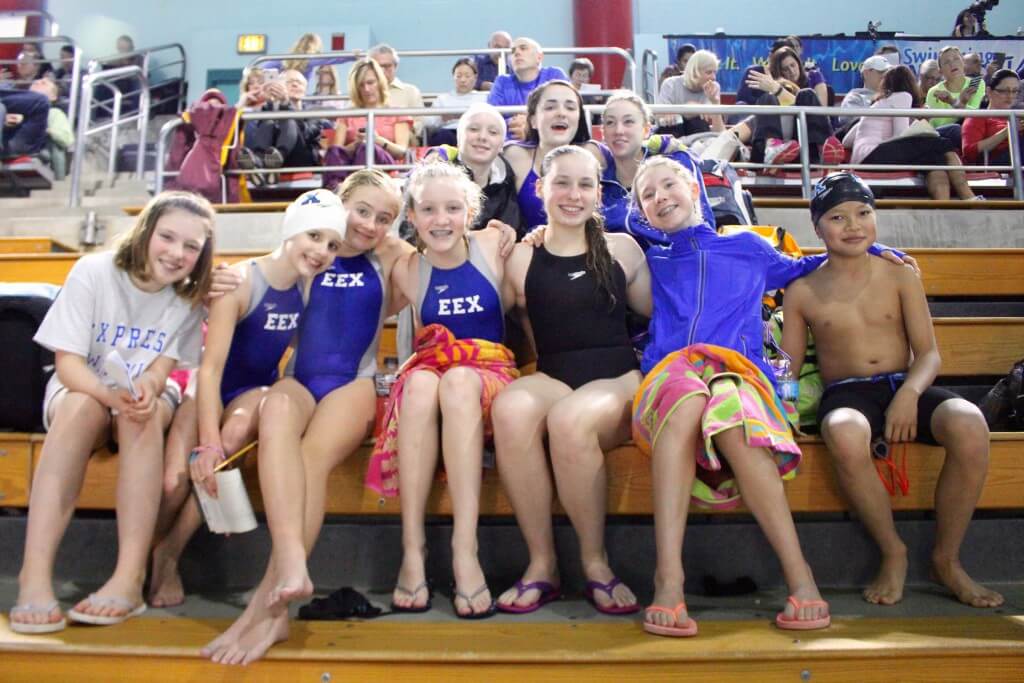Becoming a Swimmer: The Importance of Feeder Programs for New Athletes

A lot of teenagers competed at the 2021 Olympic Trials this year, staking their claims in the future of the swimming world. Many of these teenagers came from USA Swimming-affiliated teams, or other feeder programs. That fact is more important than some people realize.
Feeder programs work to get new swimmers engaged with each other and with the sport itself. In fact, many people find their love of the sport through one of these programs. Without these teams, it can be difficult for kids to become involved with the sport. And, some kids may not even realize that they have the chance to swim without them.
“Swimming is a great sport. It’s a wonderful individual sport and team sport, because it’s up to you to determine how well you do,” YMCA swim coach Tom Crooks said. Crooks is currently a YMCA swim coach.
Crooks emphasized that there was no right or wrong option when it comes to feeder programs. Also, he mentioned that different programs were made for different people. There is a spot in the swimming world for everyone, as long as they have teams available to them.
Feeding the Olympics
Many people get their start in swimming as young kids, through a USA or YMCA swim program. High school, college, national, and even Olympic level teams get their swimmers from feeder programs. For instance, Lydia Jacoby swims for Seward Tsunami Swim Club. Jacoby recently took second place in the 100 breaststroke at the Olympic Trials and is headed for the Olympic Games in Tokyo.
USA and YMCA swim clubs hold an important place in the world of swimming. Without programs like these, kids don’t get involved and engaged in the sport at a young age. And, if kids don’t get involved with swimming, then higher level swim programs wind up lacking team members.
It can be difficult for young swimmers to travel long distances to swim if they don’t have any feeder programs in their area. They may end up either not swimming at all, or not living up to their full potential because there is simply nothing for them. In order to prevent this, wide reaching swim programs can be developed and put into place. One swim team can reach different areas and many different people.
Having a swim team that operates out of several different locations can be very beneficial. The kids who join that team usually wind up getting involved in their high school teams and, eventually, some of them will end up swimming on national or zone teams. A few even end up at the Olympic Trials – and that is certainly no small feat.
The Team Atmosphere
“When we hold dual meets, we teach responsibility. Younger kids have older ‘buddies’ and those buddies help them through the meet. Responsibility is one of the core values of the Y,” Crooks said.
Additionally, the younger kids have a chance to watch their older peers swim. Meets such as this can cause younger kids to look up to and want to be like the older kids. An atmosphere such as this builds a self-feeding program that helps to engage new team members for years to come. Everyone has the opportunity to benefit and get something out of the sport.
A love of swimming can be built with a supportive team. The team also has to be willing to welcome new members. Many swim coaches are willing to try to help newer athletes improve – as long as they have the drive and motivation to succeed.
Should You Promote Feeder Programs?
In short – yes.
Feeder programs can be a wonderful way for younger swimmers to get involved with the sport of swimming! They usually end up building a strong team atmosphere and can inspire a strong love of swimming for years to come. You should encourage all young swim hopefuls to join their closest local club swim team. It can be an amazing experience.
All commentaries are the opinion of the author and do not necessarily reflect the views of Swimming World Magazine nor its staff.




I enjoyed reading this article and learned
Some things too!
Thank you Ms Dunn!
Very well written story that we do not hear enough about!